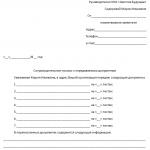On January 21, 1903, Igor Kurchatov, the "father" of the Soviet atomic bomb, was born. The Soviet Union has provided the world with many outstanding scientists who have received international awards. The names of Landau, Kapitsa, Sakharov and Ginzburg are known all over the world.
Igor Vasilievich Kurchatov (1903-1960)
Kurchatov has been working on the creation of the atomic bomb since 1942. The world's first hydrogen bomb was also developed under the leadership of Kurchatov. However, his contribution to the peaceful atom is no less important. The result of the work of the team under his leadership was the development, construction and launch of the Obninsk NPP on June 26, 1954. It became the world's first nuclear power plant. The scientist did a lot of work in the theory of the magnetic field: the demagnetization system invented by Kurchatov is still used on many ships.
Andrei Dmitrievich Sakharov (1921-1989)
Andrei Dmitrievich, together with Kurchatov, worked on the creation of a hydrogen bomb. The scientist is also the author of the invention of the Sakharov puff scheme. The brilliant nuclear physicist is no less famous for his human rights work, because of which he had to suffer. In 1980, he was exiled to Gorky, where Sakharov lives under the strict supervision of the KGB (the problems, of course, began earlier). With the beginning of perestroika, he was allowed to return to Moscow. Shortly before his death, in 1989, Andrei Dmitrievich presented a draft of a new constitution.
Lev Davidovich Landau (1908-1968)

The scientist is known not only as one of the founders of the Soviet school of physics, but also as a person with sparkling humor. Lev Davidovich deduced and formulated several basic concepts in quantum theory, conducted fundamental research in the field of ultralow temperatures and superfluidity. Landau created a numerous school of theoretical physicists. Foreign member of the Royal Society of London (1960) and the US National Academy of Sciences (1960). Initiator of creation and author (together with E.M. Lifshitz) of the fundamental classical Course of Theoretical Physics, which has withstood multiple editions and published in 20 languages. Currently, Landau has become a legend in theoretical physics: his contribution is remembered and revered.
Pyotr Leonidovich Kapitsa (1894-1984)
The scientist can quite rightly be called the "visiting card" of Soviet science - the surname "Kapitsa" was known to every citizen of the USSR, young and old. From 1921 to 1934 he worked in Cambridge under the direction of Rutherford. In 1934, having returned to the USSR for a while, he was forcibly abandoned in his homeland. Petr Leonidovich made a huge contribution to the physics of low temperatures: as a result of his research, science was enriched by many discoveries. These include the phenomenon of superfluidity of helium, the establishment of cryogenic bonds in various substances, and much more.
Vitaly Lazarevich Ginzburg (1916-2009)
The scientist received wide recognition for his experiments in the field of nonlinear optics and micro-optics, as well as for research in the field of luminescence polarization. In the emergence of widespread fluorescent lamps there is no small merit of Ginzburg: it was he who actively developed applied optics and endowed purely theoretical discoveries with practical value. Like Sakharov, Vitaly Lazarevich was engaged in social activities. In 1955 he signed the "Letter of Three Hundred". In 1966, he signed a petition against the introduction of articles persecuting "anti-Soviet propaganda and agitation" into the RSFSR Criminal Code.
Scientific research in the Soviet Union was carried out on a massive scale. Employees of countless research institutes and laboratories worked day and night for the benefit of ordinary people and the country as a whole. The Academy of Sciences carefully monitored how technicians, humanities, mathematicians, chemists, physicians, biologists, geographers cut through the fog of obscurity.
However, special attention was paid to physicists.
Branches of physics
The most important areas, which often enjoyed great privileges, were astronautics, aircraft construction, and the creation of computer technology.
There have been many famous scientists throughout history. The list entitled "The most famous physicists of the USSR" is opened by the vice-president of the USSR Academy of Sciences, academician Fedorovich. The scientist created a famous school, which at different times graduated from many talented graduates. It is no coincidence that Abram Fedorovich is an eminent Soviet physicist, one of those who are called the "fathers" of this science.
The future scientist was born in 1880 in the town of Romny, near Poltava, in the family of a merchant. In his native village, he received his secondary education, in 1902 he graduated from the St. Petersburg Institute of Technology, and three years later - the University of Munich. The future "father of Soviet physics" defended his work with Wilhelm Konrad Roentgen himself. It is not surprising that at such a young age Abram Fedorovich received the title of Doctor of Science.
After graduating from university, he returned to St. Petersburg, where he began working at the local polytechnic. Already in 1911, the scientist made the first important discovery - he determined the electron charge. The career of a specialist quickly went up, and in 1913 Ioffe received the title of professor.
The year 1918 is significant for history in that, thanks to the influence of this scientist, a physical and mechanical faculty was opened at the Institute for the Study of Radiology. For this, Ioffe subsequently received the unofficial title of "the father of the Soviet and Russian atom."
Since 1920 he has been a member of the Academy of Sciences.
During his long career, Ioffe was associated with the committee of the Petrograd industry, the association of physicists, the agrophysical institute, the house of scientists in St. Petersburg, and the semiconductor laboratory.
During the Great Patriotic War, he was in charge of the commission of military technology and engineering.
In 1942, the scientist lobbied for the opening of a laboratory in which nuclear reactions were studied. It was located in Kazan. Its official name is "Laboratory No. 2 of the USSR Academy of Sciences".
Who is called "the father of Soviet physics" most often is Abram Fedorovich!
In memory of the great scientist, busts, memorials were installed, commemorative plaques were opened. A planet, a street, a square, a school in his native Romny are named after him.
Crater on the Moon - Merit
Who is called "the father of Soviet physics" is another outstanding scientist - Leonid Isaakovich Mandelstam. He was born on April 22, 1879 in Mogilev in an intelligent family of a doctor and a pianist.

From childhood, young Leonid was drawn to science, he loved to read. He studied in Odessa and Strasbourg.
Who is called "the father of Soviet physics"? The person who did the maximum possible for this science.
Leonid Isaakovich began his scientific career in 1925 at Moscow State University. Thanks to the efforts of the scientist, the physics, mathematics and physics faculties resumed at the university.
The most famous work of Leonid Isaakovich was the study of light scattering. For such activities, the Indian scientist Chandrasekhara Raman received the Nobel Prize. Although he has repeatedly stated that it was the Soviet physicist who carried out this experiment almost a week earlier.
The scientist died in 1944 in Moscow.
The memory of Leonid Isaakovich is immortalized in busts and memorials.
A crater on the far side of the moon is named after the scientist.
Author of a textbook on which more than one generation has grown
Landsberg Grigory Samuilovich - the one who is called "the father of Soviet physics". He was born in 1890 in Vologda.
In 1908 he graduated from the gymnasium in Nizhny Novgorod with a gold medal.
In 1913 he graduated from the Physics and Mathematics Faculty of Moscow University. He began his career teaching at this university.
He also worked at the Omsk Agricultural, Moscow Physicotechnical and Technical Institutes.

In 1923 he received the title of professor.
His main work is research in optics and spectroscopy. He discovered the method of spectral analysis in various metals and alloys, for which in 1941 he was awarded the State Prize.
He is the founder of the Institute of Spectroscopy of the Academy of Sciences of the USSR and the school of atomic spectral analysis.
Schoolchildren remembered Grigory Samuilovich as the author of the "Elementary Physics Textbook", which survived multiple reprints and was considered the best for many years.
The scientist died in Moscow in 1957.
1978 Nobel Prize Winner in Physics
The scientist was famed for his studies of strong electromagnetic fields. In 1922, Petr Leonidovich defended his doctoral dissertation. In 1929 Kapitsa became a member of the Royal Society of London. At the same time, he was elected in absentia to the USSR Academy of Sciences.
In 1930, the personal laboratory of Petr Leonidovich was built.
The scientist never forgot his homeland and often came to visit his mother and other relatives.

In 1934 there was a regular visit. But Kapitsa was not allowed back to England, citing his help to foreign enemies.
In the same year, the physicist was appointed director of the Institute for Physical Problems. In 1935, he moved to Moscow and got a personal car at his disposal. Almost immediately, construction began on a laboratory similar to the English one. Funding for the project was virtually unlimited. But the scientist has repeatedly noted that the conditions were much inferior to those in England.
In the early 1940s, Kapitsa's main activity was aimed at obtaining liquid oxygen.
In 1945 he took part in the creation of the Soviet atomic bomb.
In 1955, he was in the group of developers of the first artificial satellite of our planet.
Bright work
For his work "Plasma and Controlled Thermonuclear Reaction" in 1978, the academician received the Nobel Prize.
Petr Leonidovich is a laureate of many awards and prizes. His contribution to science is truly invaluable.
The famous scientist died in 1984.

Now you know who is called the “fathers of Soviet physics”.
Guys, we put our soul into the site. Thank you for
that you discover this beauty. Thanks for the inspiration and the goosebumps.
Join us at Facebook and In contact with
Of course, writers, philosophers and other humanitarians of all stripes know how to talk beautifully about everything in the world, but only physicists really understand the world and the nature of things. In addition, they are real dreamers, romantics and people with the most developed imaginations.
site shares quotes from great scientists who can inspire anyone to creative exploits.
Nikola Tesla
Inventor in the field of electrical and radio engineering, engineer, physicist.
- Do you know the expression "You can't jump above your head"? It's a delusion. A person can do anything.
- The action of even the smallest creature leads to changes in the entire universe.
- Modern scientists think deeply, instead of thinking clearly. To think clearly, you need to have a sound mind, and you can think deeply even being completely crazy.
- If there is no opportunity to successfully attack any state, wars will end.
Lev Landau
Soviet theoretical physicist, founder of a scientific school, academician of the USSR Academy of Sciences, Nobel Prize laureate in physics (1962).
- The greatest achievement of human genius is that a person can understand things that he is no longer able to imagine.
- Everyone has enough strength to live a life with dignity. And all this talk about what a difficult time is now - this is a clever way to justify your inaction, laziness and various sadness. You have to work, and there, you see, and times will change.
- The worst sin is being bored! ... When the Last Judgment comes, the Lord God will call and ask: “Why did you not use all the blessings of life? Why did you miss? "
- Women are worthy of admiration. For much, but especially for their patience. I am convinced that if men had to give birth, humanity would quickly become extinct.
Niels Bohr
Danish physicist and philosopher, Nobel Prize laureate in physics (1922).
- An expert is a person who has made all possible mistakes in a very narrow specialty.
- Your idea is, of course, insane. The whole question is, is she crazy enough to be faithful.
- If quantum physics didn’t scare you, then you didn’t understand anything about it.
Peter Kapitsa
Soviet engineer, physicist, academician of the USSR Academy of Sciences, Nobel Prize laureate in physics (1978).
- Nothing prevents a person from becoming smarter tomorrow than he was yesterday.
- A man is young when he is not yet afraid to do stupid things.
- The main sign of talent is when a person knows what he wants.
- Freedom to create is the freedom to make mistakes.
The Soviet era can be regarded as a very productive period of time. Even in the difficult post-war period, scientific research in the USSR was financed quite generously, and the profession of a scientist itself was prestigious and well paid.
A favorable financial background, coupled with the presence of truly gifted people, brought remarkable results: in the Soviet period, a whole galaxy of physicists arose, whose names are known not only in the post-Soviet space, but throughout the world.
In the USSR, the profession of a scientist was prestigious and well paid
Sergei Ivanovich Vavilov(1891-1951). Despite his far from proletarian origin, this scientist managed to defeat class filtration and become the founding father of an entire school of physical optics. Vavilov is a co-author of the discovery of the Vavilov-Cherenkov effect, for which later (after the death of Sergei Ivanovich) the Nobel Prize was received.

Vitaly Lazarevich Ginzburg(1916-2009). The scientist received wide recognition for his experiments in the field of nonlinear optics and micro-optics; and also for research in the field of luminescence polarization.
Ginzburg owes much to the emergence of fluorescent lamps.
In the emergence of widespread fluorescent lamps there is no small merit of Ginzburg: it was he who actively developed applied optics and endowed purely theoretical discoveries with practical value.

Lev Davidovich Landau(1908-1968). The scientist is known not only as one of the founders of the Soviet school of physics, but also as a person with sparkling humor. Lev Davidovich derived and formulated several basic concepts in quantum theory, conducted fundamental research in the field of ultralow temperatures and superfluidity. Currently, Landau has become a legend in theoretical physics: his contribution is remembered and revered. 
Andrey Dmitrievich Sakharov(1921-1989). The co-inventor of the hydrogen bomb and a brilliant nuclear physicist sacrificed his health for the cause of peace and common security. The scientist is the author of the invention of the Sakharov puff scheme. Andrei Dmitrievich is a vivid example of how rebellious scientists were treated in the USSR: long years of dissidence undermined Sakharov's health and did not allow his talent to unfold in full force. 
Pyotr Leonidovich Kapitsa(1894-1984). The scientist can quite rightly be called a "visiting card" of Soviet science - the surname "Kapitsa" was known to every citizen of the USSR, young and old.
The surname "Kapitsa" was known to every citizen of the USSR
Petr Leonidovich made a huge contribution to the physics of low temperatures: as a result of his research, science was enriched by many discoveries. These include the phenomenon of superfluidity of helium, the establishment of cryogenic bonds in various substances, and much more. 
Igor Vasilievich Kurchatov(1903-1960). Contrary to popular beliefs, Kurchatov worked not only on nuclear and hydrogen bombs: the main direction of Igor Vasilyevich's scientific research was devoted to the development of atomic fission for peaceful purposes. The scientist did a lot of work in the theory of the magnetic field: the demagnetization system invented by Kurchatov is still used on many ships. In addition to scientific instinct, the physicist had good organizational qualities: under the leadership of Kurchatov, many complex projects were implemented.
The Soviet era can be regarded as a very productive period of time. Even in the difficult post-war period, scientific research in the USSR was financed quite generously, and the profession of a scientist itself was prestigious and well paid.
A favorable financial background, coupled with the presence of truly gifted people, brought remarkable results: in the Soviet period, a whole galaxy of physicists arose, whose names are known not only in the post-Soviet space, but throughout the world.
Vavilov. (wikipedia.org)
Sergei Ivanovich Vavilov (1891-1951). Despite his far from proletarian origin, this scientist managed to defeat class filtration and become the founding father of an entire school of physical optics. Vavilov is a co-author of the discovery of the Vavilov-Cherenkov effect, for which later (after the death of Sergei Ivanovich) the Nobel Prize was received.

Ginzburg. (wikipedia.org)
Vitaly Lazarevich Ginzburg (1916-2009). The scientist received wide recognition for his experiments in the field of nonlinear optics and micro-optics; and also for research in the field of luminescence polarization.
In the emergence of widespread fluorescent lamps there is no small merit of Ginzburg: it was he who actively developed applied optics and endowed purely theoretical discoveries with practical value.

Landau. (wikipedia.org)
Lev Davidovich Landau (1908-1968). The scientist is known not only as one of the founders of the Soviet school of physics, but also as a person with sparkling humor. Lev Davidovich derived and formulated several basic concepts in quantum theory, conducted fundamental research in the field of ultralow temperatures and superfluidity. Currently, Landau has become a legend in theoretical physics: his contribution is remembered and revered.

Sakharov. (wikipedia.org)
Andrei Dmitrievich Sakharov (1921-1989). The co-inventor of the hydrogen bomb and a brilliant nuclear physicist sacrificed his health for the cause of peace and common security. The scientist is the author of the invention of the Sakharov puff scheme. Andrei Dmitrievich is a vivid example of how rebellious scientists were treated in the USSR: long years of dissidence undermined Sakharov's health and did not allow his talent to unfold in full force.

Kapitsa. (wikipedia.org)
Pyotr Leonidovich Kapitsa (1894-1984). The scientist can quite rightly be called a "visiting card" of Soviet science - the surname "Kapitsa" was known to every citizen of the USSR, young and old.
Petr Leonidovich made a huge contribution to the physics of low temperatures: as a result of his research, science was enriched by many discoveries. These include the phenomenon of superfluidity of helium, the establishment of cryogenic bonds in various substances, and much more.





